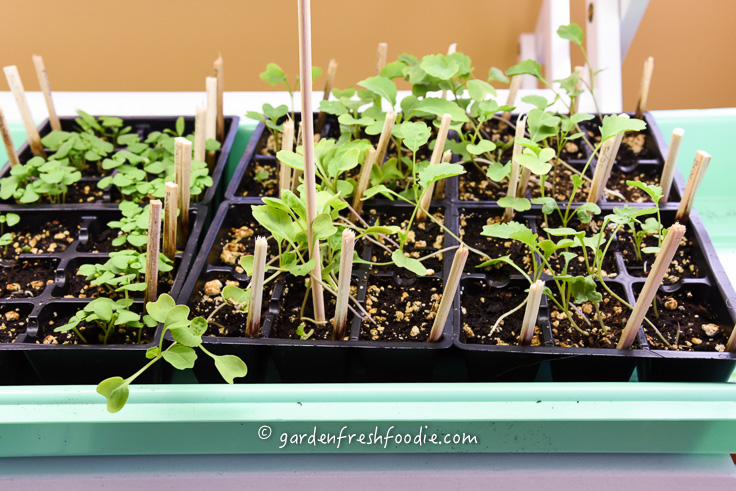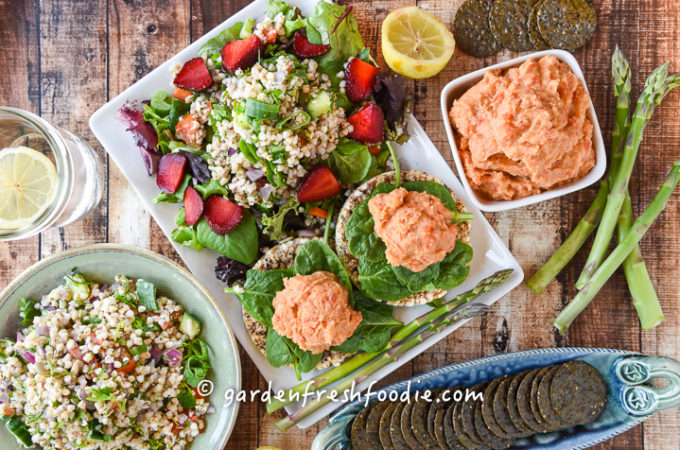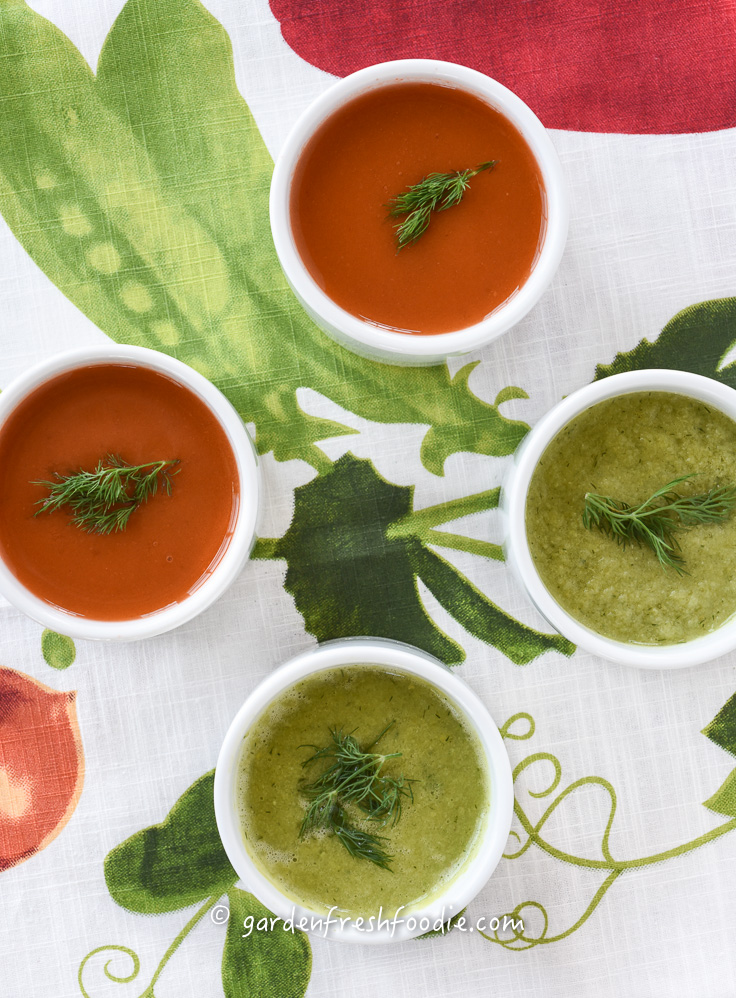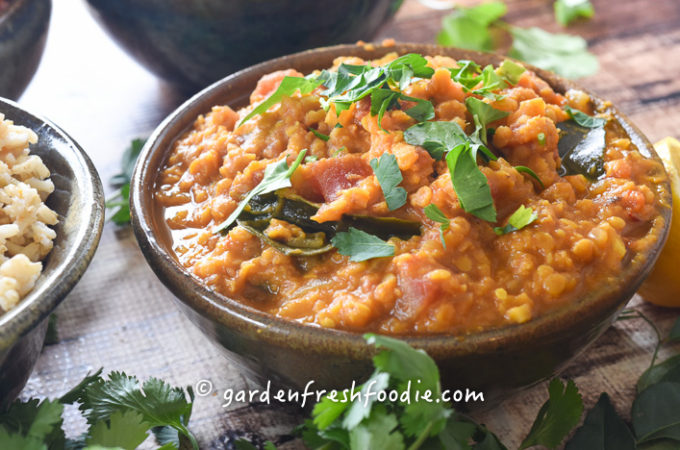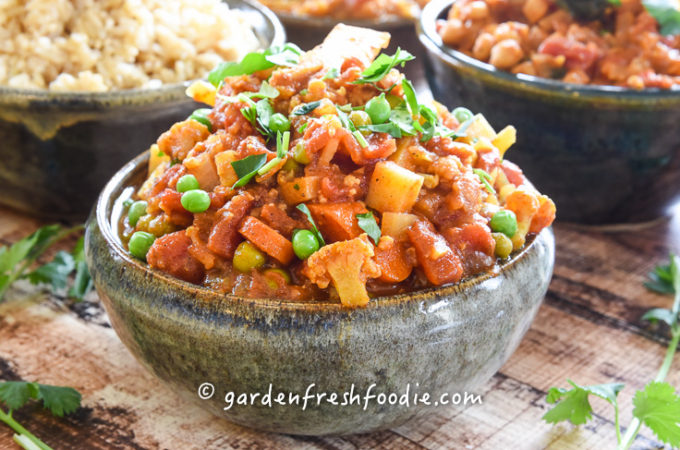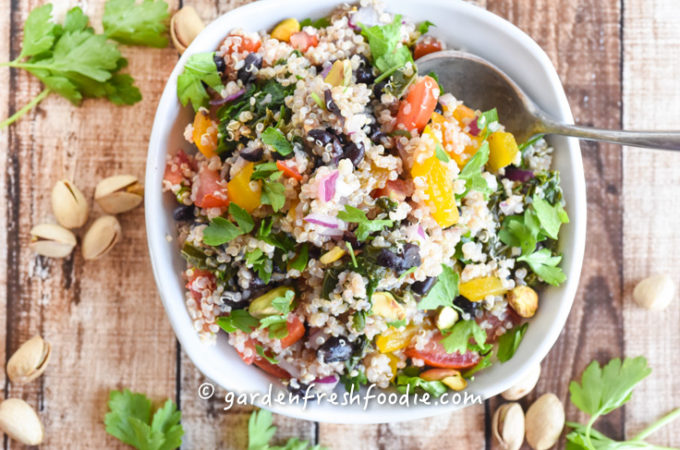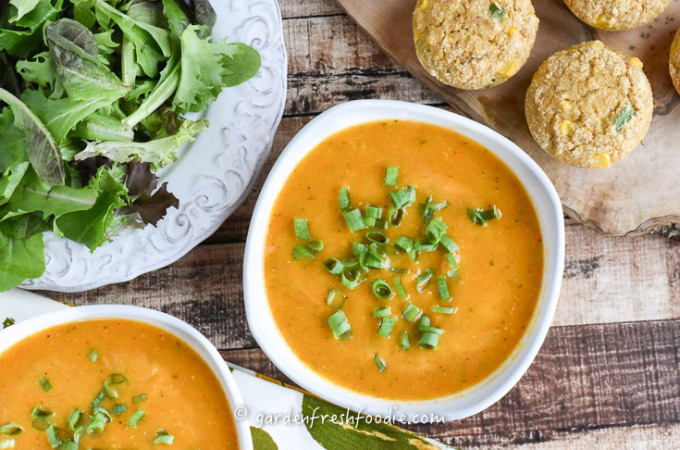 Whooohoo! It’s in the mid-sixties today!!! I’m feeling spring! Can’t wait to get out into the garden, but we’re not there yet (it’s supposed to snow this weekend, ugh!). So-I turn my attention to the babies I have growing under lights.
Whooohoo! It’s in the mid-sixties today!!! I’m feeling spring! Can’t wait to get out into the garden, but we’re not there yet (it’s supposed to snow this weekend, ugh!). So-I turn my attention to the babies I have growing under lights.
If you’ve started your seeds indoors you are on your way to growing healthy, organic plants. If you need help getting started, see this post on seed starting. Once your seeds have sprouted-now what? Growing Factor 1: Water! You need to make sure that your plants receive enough water and light in this early stage. Be sure to check daily for watering needs. If your plants dry out at any point during these early growing periods, they are at great risk of dying. This is because they’re so thin and fragile. Excess water loss hits the plants hard at this stage. Avoid causing stress to the plants, and maintain an even soil moisture.
Light: growing factor 2. Seedings must have enough light to grow straight. Maybe you’ve seen plants bending towards light? This is called phototropism. Its the plant’s desire to grow towards light. Notice the bending in the broccoli seedlings below?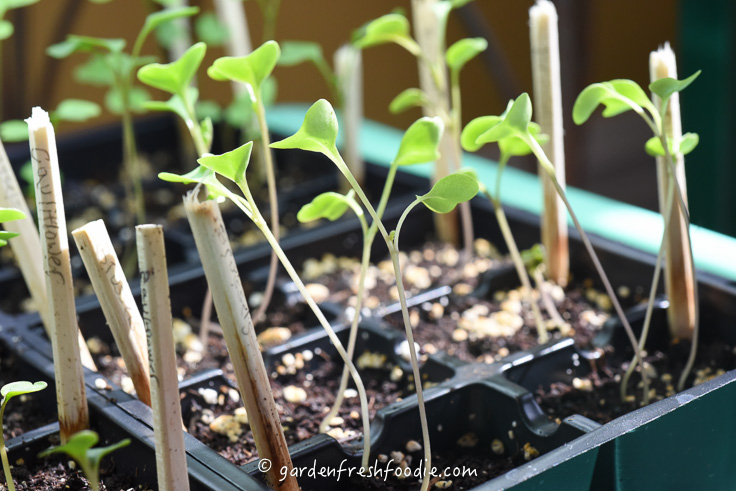 Plants create more cells on the sides of the plant away from light, creating a bending affect. You can stop this by rotating your plants each day and/or by using overhead grow lights. I LOVE my grow light system. It’s called 4-Foot Jump Start T5 Grow Light System (amazon link), and I have had it for several years without changing the bulb yet. I own 2 of them and I can grow 2 trays under each light. I noticed a significant improvement in my growing by using the lights. My plants grow stronger and healthier. I keep the lights on for about 12 hours each day, turning them off at night. If grow lights aren’t for you, be sure to set your plants close to a southern exposure and rotate them each day.
Plants create more cells on the sides of the plant away from light, creating a bending affect. You can stop this by rotating your plants each day and/or by using overhead grow lights. I LOVE my grow light system. It’s called 4-Foot Jump Start T5 Grow Light System (amazon link), and I have had it for several years without changing the bulb yet. I own 2 of them and I can grow 2 trays under each light. I noticed a significant improvement in my growing by using the lights. My plants grow stronger and healthier. I keep the lights on for about 12 hours each day, turning them off at night. If grow lights aren’t for you, be sure to set your plants close to a southern exposure and rotate them each day.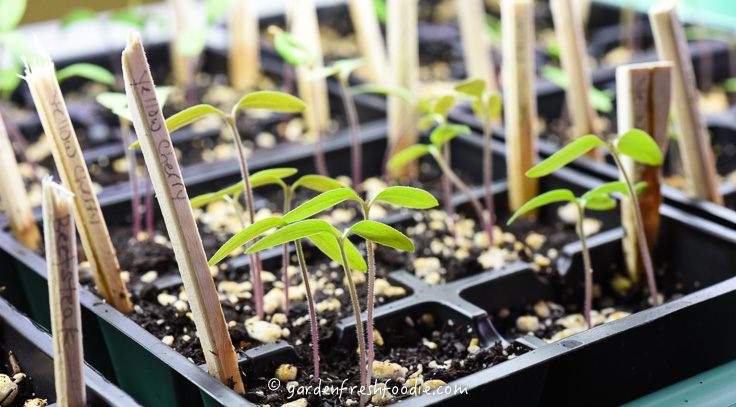
Hopefully you have good germination success. I plant 2 (or sometimes 3) seeds per planting cell. I do this to ensure germination. As you can see above, this often leaves me with too many plants. If this is the case for you, you will have to thin out the extras. Using a scissors, cut off the extra plants. Try to select the strongest ones, towards the center of the growing area (this prevents others seedlings from crowding them out). The clipped seedlings can be eaten as sprouts. My favorite sprouts are broccoli, or any cruciferous veggies like cauliflower or brussels sprouts. I don’t thin out my leeks, but rather clip them back to get them to grow stronger. They are pretty lanky plants, and if you cut them back, they widen out and get stronger. In a few weeks if I want to thin them, they’ll be stronger and I can make a better decision at that point. This makes them more successful for when you transplant outside. Save these clippings and use them as you would chives.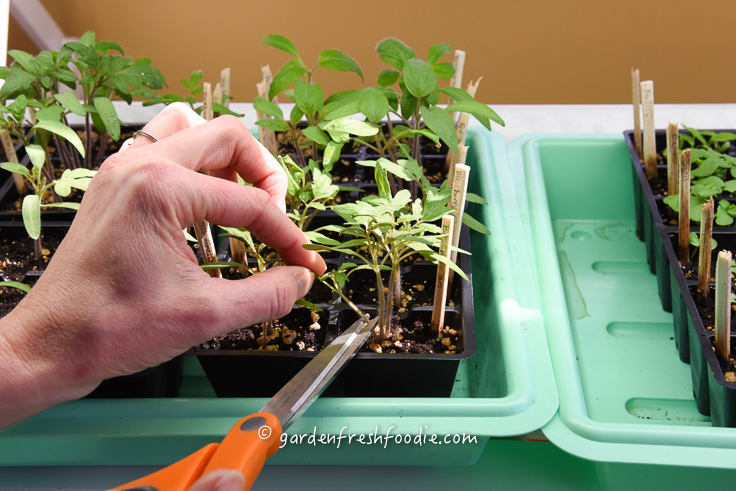
Last step at this stage is to stake those floppy plants. I stock up on chopsticks throughout the year and use them for this process. Broccoli and its relatives, tend to be pretty spindly. By staking these seedlings, you’ll help strengthen them and allow them to grow straighter. Same goes for tomatoes. Peppers are slower growing, so be sure to start these first-or even earlier than the rest of your seeds. If they need staking, stake them too. They tend to do better, since they grow more slowly. I also find that using twist ties to secure the stems to the stakes helps with this process. Just be careful not to twist the tie, just secure by pinching the ends closed around the stake, so you don’t break the stem. For an example of this check out my youtube video below.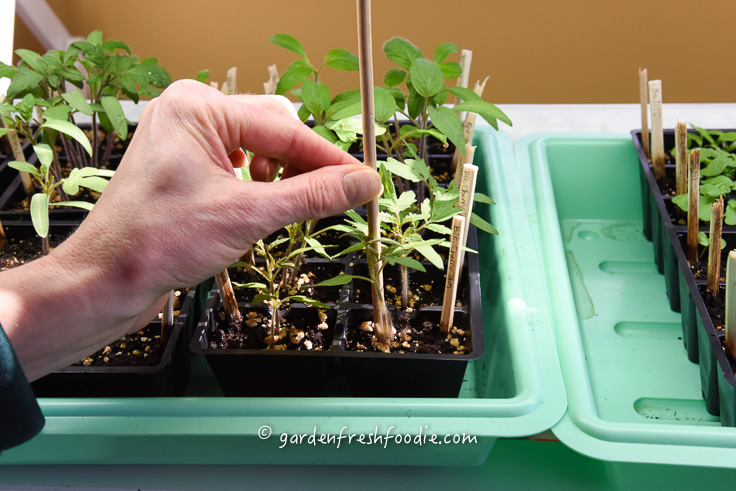
Need some more verbal instruction? Watch my YouTube video on thinning out your seedlings.
Check back for more gardening 101 to come….
